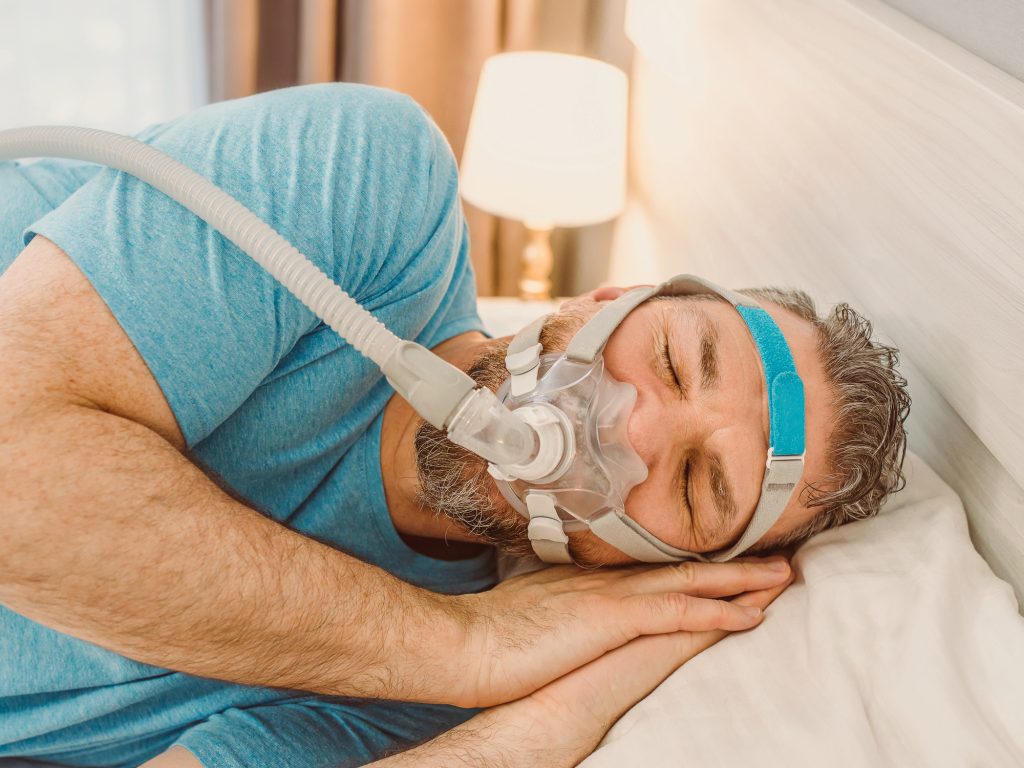I. Introduction

In today’s healthcare, checking patient case management plans is important to make sure people get the best care for their specific needs. This guide will explain the many parts involved in looking at these plans, which are important for arranging various healthcare services. A careful evaluation is necessary not just for better patient results but also for using healthcare resources more effectively, leading to a more streamlined system. The guide will discuss aspects like patient satisfaction, following treatment guidelines, and teamwork among healthcare providers, giving a broad perspective on evaluation methods. By knowing the key ideas and good practices for assessing case management plans, healthcare workers can make smarter choices that improve service delivery and raise the quality of care for patients. This introduction prepares for a more in-depth look at the key factors in evaluating effective patient care strategies.
Please also review AIHCP’s Case Management Education Program and see if it meets your academic and professional goals.
A. Definition of Patient Case Management Plans
In healthcare, patient case management plans are structured ways to organize and improve patient care. These plans identify the specific needs of patients and connect services from different healthcare providers, ensuring a thorough approach to treatment. By encouraging teamwork among various specialists, these plans not only boost care quality but also lead to better patient results and satisfaction. Creating effective patient case management plans is important, as shown by initiatives in a review of state progress on medical home programs, which stress the importance of strategies for getting primary care providers involved (Buxbaum J et al., 2011). Furthermore, data from ten states indicate that using a medical home model can greatly enhance care quality and manage costs, highlighting the importance of structured case management in making healthcare more efficient (Takach M et al., 2009).
B. Importance of Evaluation in Healthcare
In the changing world of healthcare, the need for evaluation is very important, especially regarding patient case management plans. Good evaluation processes improve the quality of care and help find gaps and areas that need work, leading to better patient results. The Advancing Care Coordination & Telehealth Deployment (ACT) Programme shows that knowing what stakeholders think—like managers, frontline staff, and patients—can greatly affect healthcare delivery. By understanding differences in these views, organizations can adjust their evaluation methods to better meet patient needs and expectations, which can improve participation and compliance in healthcare programs (Baroni et al., 2015). Moreover, using evaluation technologies like the MAESTRO model for Enterprise Application Integration (EAI) can help make better decisions, allowing healthcare organizations to pursue effective case management strategies (Irani et al., 2008). This well-rounded approach to evaluation is key for improving healthcare quality and refining case management methods.
C. Overview of the Essay Structure
When making a good essay structure, especially for a complex topic like looking at patient case management plans, a clear method is very important. The introduction should show the main idea and explain why this topic matters, stressing why careful evaluation is necessary in healthcare. After that, the body paragraphs need to explore different parts of case management, such as theories and real-world uses, while using data to back up arguments. For example, knowing the details of putting complex interventions into practice is important, as (Barratt et al., 2016) points out that we need new methods to meet today’s healthcare challenges. Also, using real-life examples can make the arguments stronger. The conclusion should wrap up the main points made in the essay, highlighting their significance for healthcare practices and future studies, providing a clear ending to the discussion about patient case management plans.
II. Key Components of Patient Case Management Plans
Good patient case management plans are important for coordinating care and improving health results, especially for patients who have complicated health needs. Key parts of these plans include thorough assessments, personalized goal setting, and regular reviews of patient progress and treatments. For example, parents of kids in the hospital often feel unprepared to handle their child’s care after they leave, which shows the need for organized support. A conversation guide based on theory has been created to help nurses prepare to support parents, stressing the importance of customized strategies for discharge planning and self-care (Gralton et al., 2017). Also, creating standardized databases, like all-payer claims databases, helps with better data gathering and analysis, making it easier to make informed choices and be transparent in managing patient care (Costello et al., 2015). These factors work together to improve the effectiveness and adaptability of patient case management plans, ensuring a complete approach to patient care.
A. Patient Assessment and Diagnosis
Good patient assessment and diagnosis are very important parts of complete case management plans. They directly affect how patients do and how satisfied they are. This process starts with collecting a lot of data, which includes medical history, psychological evaluation, and demographic details. This helps healthcare providers find out what specific patients need. Programs like the Advancing Care Coordination & Telehealth Deployment (ACT) Programme show that it is important to understand what both managers and frontline staff think, which often doesn’t match with what patients experience (Baroni et al., 2015). This mismatch can create gaps in care, highlighting the need for clear communication and shared duties between healthcare workers and patients. Also, having a specific contact person in healthcare settings is very helpful for keeping care continuous and encouraging following treatment plans. In the end, understanding the complicated nature of patient views and the organizational structures that affect these interactions is very important for improving how patient assessment and diagnosis work in case management (Devine et al., 2020).
B. Goal Setting and Care Planning
Setting goals and planning care are very important for improving patient outcomes in case management. As healthcare workers work to make discharge processes better, having clear and measurable goals helps parents of hospitalized children get ready for managing care when they go home. A study showed that many parents do not feel ready to handle their child’s ongoing care, which points to the need for well-structured interventions, like a guided conversation tool based on comprehensive approaches such as the Individual and Family Self-Management Theory and Tanner’s Model of Clinical Judgment (Gralton et al., 2017). Additionally, using care coordination and telehealth services highlights how crucial teamwork is among healthcare providers to make sure patients stick to their care plans, showing that successfully managing care is a shared responsibility between providers and patients (Baroni et al., 2015). In the end, combining these methods improves care planning and boosts the overall effectiveness of patient management approaches.
C. Implementation of Interventions
Doing interventions is important for good patient case management plans, especially when moving care from the hospital to the home. Parents of sick kids in the hospital often feel unready for self-care after going home, so making structured interventions to help them gain needed skills is important. Making a conversation guide based on theories like the Individual and Family Self-Management Theory and the Teach-Back method is a new way to meet these needs and improve nursing practice (Gralton et al., 2017). Also, big projects like the Advancing Care Coordination & Telehealth Deployment (ACT) Programme show that successful implementation needs not just thorough training for healthcare workers but also an understanding of patient views and how organizations work (Baroni et al., 2015). So, careful evaluation of these interventions is crucial to improve methods and achieve better patient results in complicated healthcare situations.
III. Evaluation Methods for Case Management Plans

A thorough review of case management plans is important to make sure they meet patient needs and improve health results. This involves looking at different parts, such as how care is coordinated and how patients are involved. Learning from successful programs like the medical home model provides useful information for improving case management. For example, as noted, ten states have adopted best practices to enhance coordinated care in Medicaid and Children’s Health Insurance Programs, leading to better quality and cost control (Takach M et al., 2009). Additionally, the development of accountable care organizations shows what has been learned from working with insurers, highlighting key factors for success in delivering care (Aricca D Citters V et al., 2012). By using these evaluation techniques, healthcare workers can improve case management plans, which will increase patient satisfaction and lead to better health results.
A. Quantitative Evaluation Techniques
In looking at patient case management plans, quantitative evaluation methods are important for checking how well care is given and how resources are used. These methods help gather numerical data, which allows those involved to look at results like patient compliance, happiness, and health improvements. For example, findings from case studies such as the ACT programme show the need to understand how patients, managers, and healthcare workers feel, pointing out how the structure of organizations affects user experiences (Baroni et al., 2015). Also, using a mix of surveys and performance analysis, shown in projects at Bond University Library, shows how quantitative methods can help improve practices and spark new ideas (Abbott et al., 2006). This combination of data-focused evaluation encourages ongoing improvement, which is key for bettering patient care and refining management approaches in healthcare.
B. Qualitative Evaluation Techniques
When looking at patient case management plans, qualitative evaluation methods provide important insights that go beyond just numbers. These techniques focus on understanding patient experiences and the details of healthcare delivery. Through in-depth interviews and focus groups, evaluators can collect rich, personal data that show how patients view their care and how well management strategies work. For example, in health master plans, thorough situational analyses are crucial for breaking down the political, economic, and social factors that affect health outcomes, as mentioned in (Kalainathan R et al., 2025). Also, using artificial intelligence in diet planning highlights the necessity for qualitative evaluations to understand individual patient needs and preferences, which is key for creating effective healthcare interventions, as noted in (Kim DW et al., 2024). By using these qualitative methods, healthcare professionals can make sure that patient case management plans are responsive, fair, and genuinely represent the communities they support.
C. Use of Patient Feedback in Evaluation
Involving patient feedback in checking case management plans is very important for improving care quality and making sure services focus on patients. This feedback is a key source of understanding patients’ experiences, helping healthcare providers spot what they do well and what needs betterment in their care processes. For example, parents of kids in the hospital often say they do not feel ready to handle care after leaving, which points to a significant gap that could be fixed with organized approaches (Gralton et al., 2017). By creating strong feedback methods, like surveys and focus groups, healthcare systems can regularly gather and study this information, resulting in practical changes in how they operate. Also, setting up standard ways to include feedback in ongoing reviews can build a culture of openness and continuous advancement, ultimately promoting better decision-making and improving care results, as seen with programs like the All-Payer Claims Database (Costello et al., 2015). By focusing on patient input, case management plans can change to better address the ever-changing needs of patients and their families.
IV. Challenges in Evaluating Patient Case Management Plans
Evaluating patient case management plans faces many challenges that make the assessment process harder and can hinder providing optimal care. A major issue is the absence of standardized tools and frameworks to measure how well these plans work. For example, differences in health literacy among patients can cause variations in how well they engage with case management strategies, which affects the outcomes. Moreover, parents of hospitalized children often say they feel unready for self-management after discharge, especially when dealing with chronic conditions, showing that current methods may not adequately prepare families for ongoing care needs (Gralton et al., 2017). Additionally, having a common clinical information system is important for ensuring continuity and coordination in managing chronic diseases, but its use can vary, which limits teamwork among healthcare professionals (McCarthy D et al., 2008). Tackling these challenges is crucial to improve how we evaluate case management plans and enhance patient outcomes.
A. Variability in Patient Needs and Outcomes
Differences in patient requirements and results are very important for making good case management plans. These differences can come from many things, like demographic variations, existing health issues, and different levels of understanding health information. For example, a patient who has a long-term illness might need a special approach that looks at not just their medical needs, but also their mental and social situations. A thorough assessment of these various needs helps to enhance health results, supported by guidelines that stress the importance of personalized care plans. The ESC/EAS Guidelines suggest that healthcare professionals should carefully consider each patient’s specific health situation and involve them in decisions about their care. Therefore, acknowledging and addressing these differences is crucial for health professionals to develop and carry out effective management plans that lead to the best possible patient results, while also meeting the ethical and professional standards set forth in the guidelines (Vahanian A et al., 2021)(François Mach et al., 2019).
B. Resource Limitations in Healthcare Settings
Resource limits in healthcare can badly affect how well patient case management plans work, usually resulting in lower care quality and higher overall costs. Money issues can make it hard to get needed medical resources, which impacts patient results and how efficiently care is given. For example, healthcare places might have trouble hiring enough staff or making detailed care plans that meet different patient needs, especially in areas where resources are already low. The effectiveness of care is often judged using methods that look at patient outcomes and how resources are used, highlighting the need to tackle these limits ((N/A, 2010)). Moreover, efforts to improve community nursing practice need to consider the connections among different health systems, as seen in projects that support case management models ((Gray et al., 2010)). By recognizing and dealing with these resource issues, healthcare providers can enhance patient care and results.
C. Ethical Considerations in Evaluation
In the area of healthcare evaluation, ethical factors are very important to make sure that patient case management plans are both useful and kind. The focus on ethical evaluation is based on the ideas of helping others, avoiding harm, respecting patient choice, and fairness. These ideas help healthcare workers make decisions. For example, using complete geriatric assessments to look at oncogeriatric patients highlights the need to consider the special needs and situations of older adults. This leads to more personalized treatment methods that can improve results (Lampugnale et al., 2017). Additionally, the high rates of readmission for behavioral health patients point to underlying problems that require ethical examination, especially concerning access to helpful resources and how organizational rules affect patient well-being (Sekhon et al., 2023). By incorporating ethical principles into evaluation methods, healthcare providers can better handle complicated clinical situations while respecting the dignity and rights of patients.
V. Conclusion

In summary, looking at patient case management plans requires a broad approach that focuses on getting the right diagnosis, thorough assessment, and personalized care strategies. For example, in case studies like the misdiagnosis of a college athlete with heterotopic ossification, having detailed medical histories is essential for good patient results (Cage et al., 2019). Also, using new techniques like sensory modulation can improve patient involvement and decrease the need for forceful methods (Hoque et al., 2016). Bringing these parts together highlights the need for ongoing education and flexibility in healthcare environments, promoting teamwork and smart decision-making. Overall, a well-organized case management plan deals with patients’ immediate health issues and empowers them by improving therapy relationships, customized strategies, and a focus on overall well-being, leading to lasting recovery and success in clinical practice.
A. Summary of Key Points
In summarizing the main points of a complete guide to evaluating patient case management plans, it is important to stress the need for teamwork among healthcare providers. Good case management depends a lot on forming accountable care organizations. This is shown by the progress seen by a medical group and an independent practice association during the Brookings-Dartmouth ACO Pilot Program, which highlights the need for partnerships with insurers to get good results (Aricca D Citters V et al., 2012). Also, using the medical home model has shown it can improve care quality while keeping costs in check, especially in Medicaid and Children’s Health Insurance Programs in different states (Takach M et al., 2009). These results show that a mixed approach that focuses on coordinated care and accountability is key to improving patient management plans and achieving better health outcomes for various groups.
B. The Future of Patient Case Management Evaluation
As healthcare changes, the future of evaluation in patient case management will depend more on combining theories and practices based on evidence. This change requires attention to improving discharge steps, especially for families dealing with complicated health issues. By creating tools that help with self-management and readiness for care after discharge, healthcare workers can boost long-term results. For example, making a conversation guide based on theory for nurses seeks to address gaps in how ready parents feel, helping them as they move to home care (Gralton et al., 2017). Also, lessons from past discussions about effective policies on tobacco use show the need to adjust successful methods for wider use in case management (N/A, 2005). In the end, using new evaluation methods will give a clearer view of patient experiences, guiding best practices and improving the effectiveness of care plans for the future.
C. Final Thoughts on Improving Patient Care Through Effective Evaluation
In summary, the aim of better patient care through proper evaluation shows the need for systematic assessment in case management plans. By focusing on thorough evaluations, healthcare workers can find service delivery gaps, meet individual patient needs, and support ongoing improvement. A solid evaluation framework helps with evidence-based decision-making and allows healthcare teams to adjust strategies based on patient results. As stakeholders see the importance of patient-centered care, creating an environment where patients and caregivers can give feedback is very important. In the end, using strong evaluation methods in patient case management will result in more tailored care, better health outcomes, and higher patient satisfaction. This all-encompassing method not only improves the healthcare system but also renews the focus on keeping patient needs central to healthcare decisions.
Please also review AIHCP’s and the American Academy of Case Management’s Case Management Courses that lead to certification. The program is online and independent study and open to qualified healthcare professionals seeking a four year certification.
References:
- Baroni, I., Barrett, D., Bescos, C., Buskens, et al. (2015). What does it take to make integrated care work? A ‘cookbook’ for large-scale deployment of coordinated care and telehealth.
- Irani, Z, Khoumbati, K, Mantzana, V, Themistocleous, et al. (2008). Information systems and healthcare XXIV: Factors affecting the EAI adoption in the healthcare sector.
- Abbott, Wendy Anne (2006). Persuasive evidence:Improving customer service through evidenced based librarianship.
- Gralton, Karen, Johnson, Norah L., Kaul, Molly, Klingbeil, et al. (2017). Development of a Self‐Management Theory‐Guided Discharge Intervention for Parents of Hospitalized Children.
- Douglas McCarthy, Kimberly Mueller (2008). The New York City Health and Hospitals Corporation: Transforming a Public Safety Net Delivery System to Achieve Higher Performance.

 Written by Lauren N. Ray
Written by Lauren N. Ray Author Name: Lauren N. Ray
Author Name: Lauren N. Ray